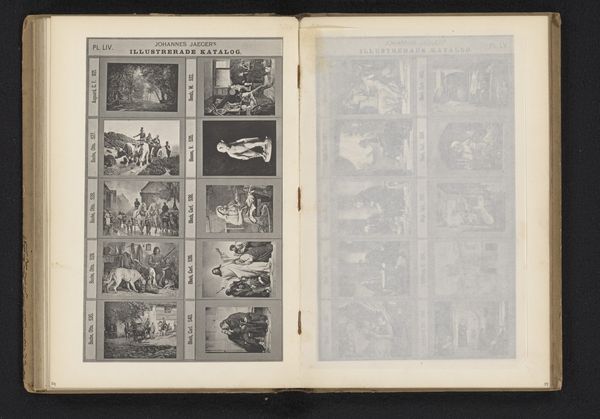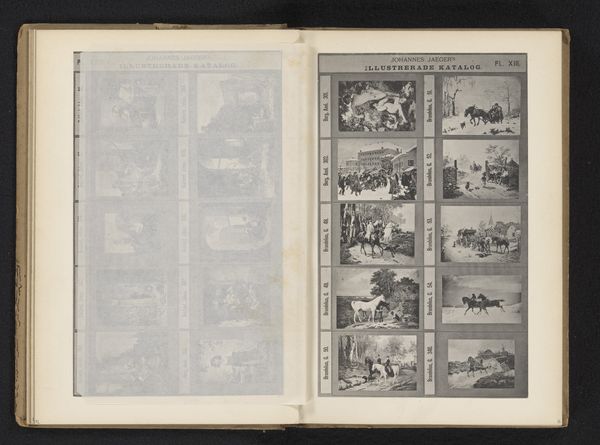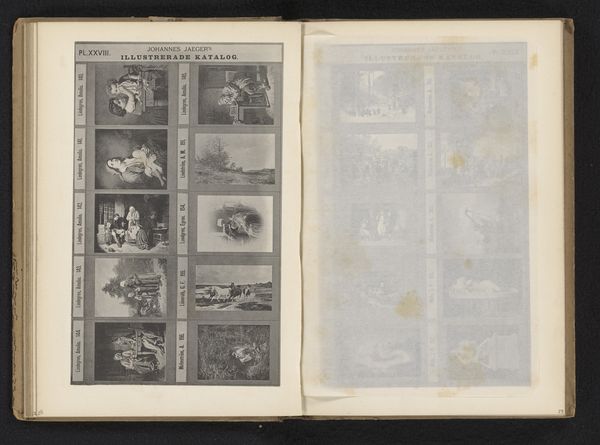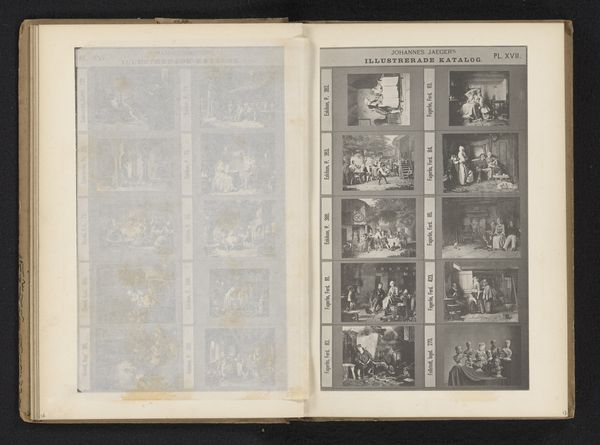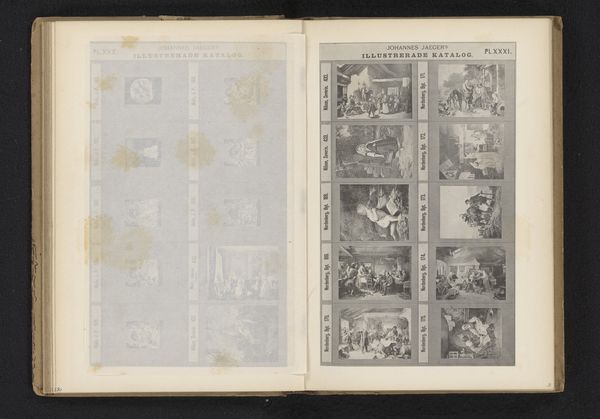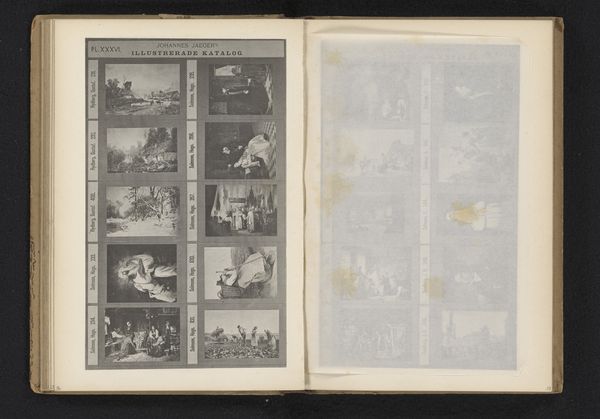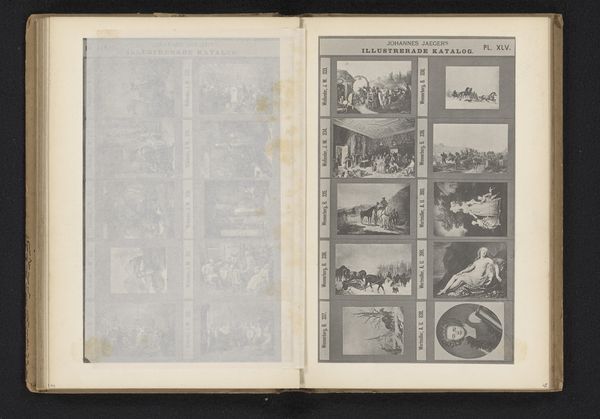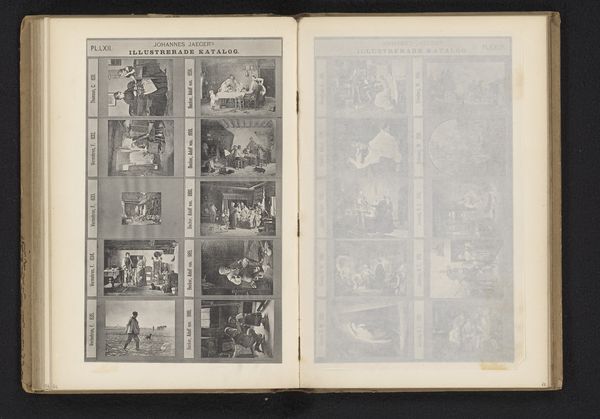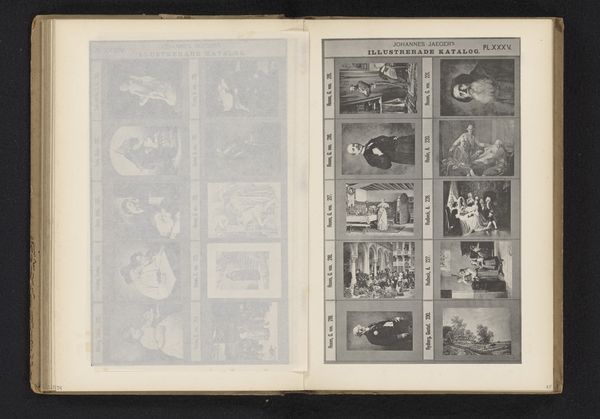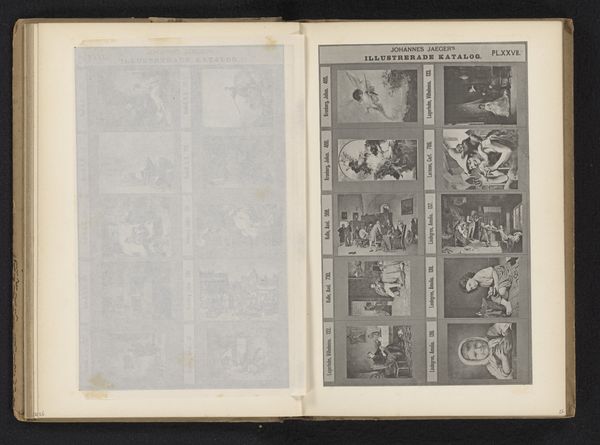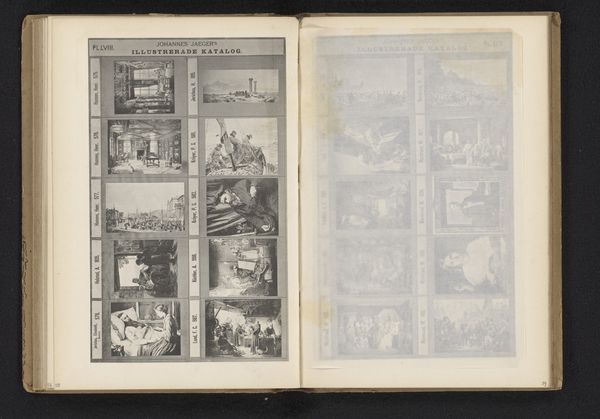
Fotoreproductie van tien schilderijen met voornamelijk historische voorstellingen c. 1872 - 1882
0:00
0:00
print, etching
# print
#
etching
#
history-painting
Dimensions: height 180 mm, width 110 mm
Copyright: Rijks Museum: Open Domain
Editor: This work, "Photographic Reproduction of Ten Paintings, Mainly with Historical Representations" by Johannes Jaeger, around 1872 to 1882, appears to be a print, maybe an etching? I'm really struck by the way these miniature historical paintings are laid out like a catalog of available artworks, kind of like an IKEA furniture guide. What are your thoughts on this peculiar collection? Curator: This catalogue format highlights a critical aspect of art consumption and distribution in the late 19th century. How were these images used, and what does their mass reproduction reveal about art's role in society at the time? Notice how the etching technique allows for multiples, enabling broader access than unique oil paintings. What implications might this democratization have had on notions of artistic value? Editor: That's interesting. So, it's less about the artistry of each individual image and more about the mechanics of getting art out to a wider audience? Was this a common practice then? Curator: Exactly. And consider the labour involved: from the original painter to the photographer reproducing their work, to the etcher and printer creating these multiples. The artistic "genius" becomes diffused across multiple hands and processes. Who profits, and how are those profits distributed? This relates directly to questions about labour and artistic value. The act of distributing became part of art making itself. What do you make of it? Editor: It reframes my perspective entirely. Instead of just admiring the "historical representations" within each picture, I'm now thinking about the whole system of production and how these images circulated within society. Almost like mass-produced collectibles. I'll never look at an etching the same way! Curator: Precisely. And understanding that changes how we value the individual pieces, too, and what “art” means in relation to that historical production.
Comments
No comments
Be the first to comment and join the conversation on the ultimate creative platform.



